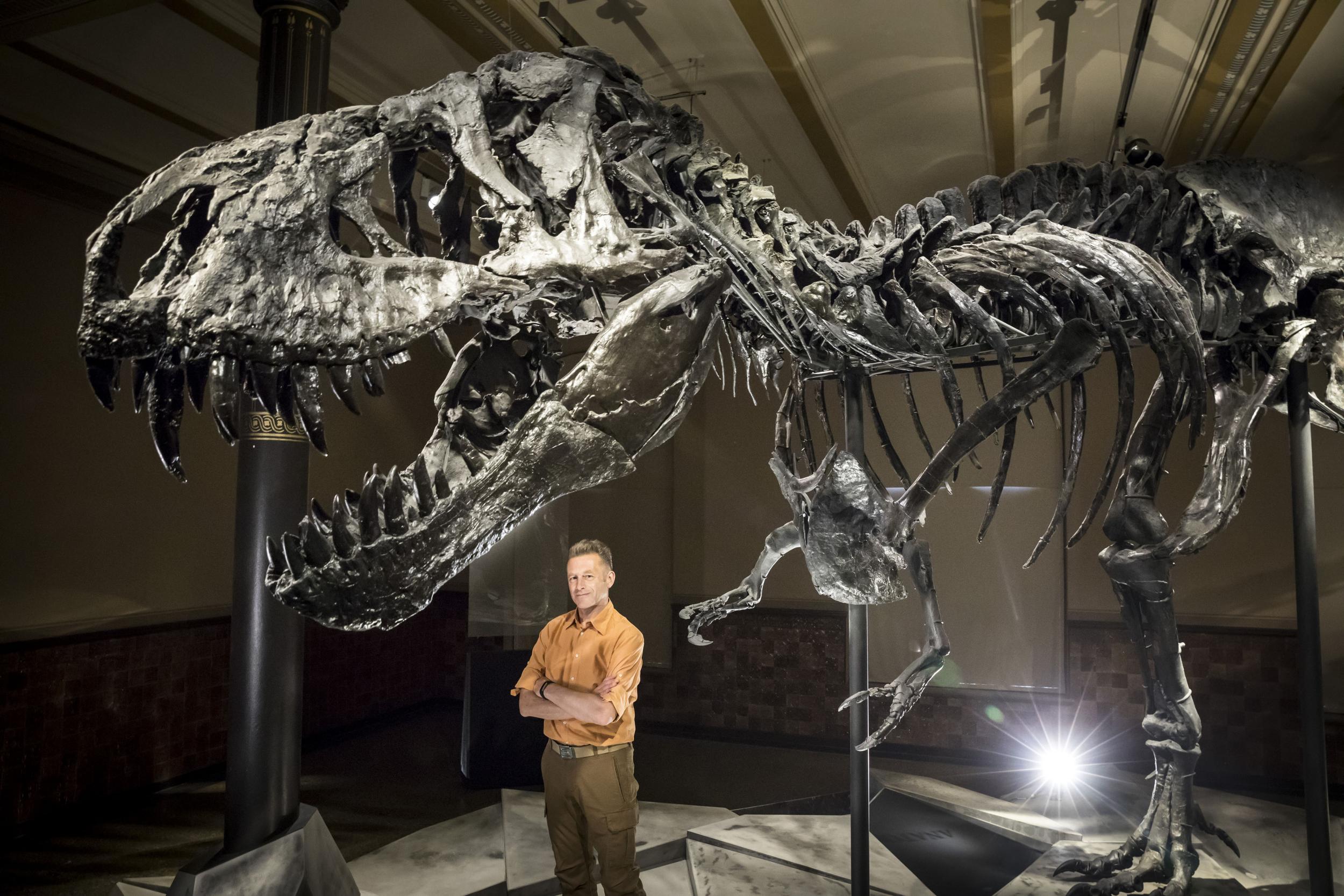TV Review, The Real T-Rex with Chris Packham (BBC2): Crushing the myths about these big beasts
Plus: Great British Railway Journeys (BBC2)

Your support helps us to tell the story
From reproductive rights to climate change to Big Tech, The Independent is on the ground when the story is developing. Whether it's investigating the financials of Elon Musk's pro-Trump PAC or producing our latest documentary, 'The A Word', which shines a light on the American women fighting for reproductive rights, we know how important it is to parse out the facts from the messaging.
At such a critical moment in US history, we need reporters on the ground. Your donation allows us to keep sending journalists to speak to both sides of the story.
The Independent is trusted by Americans across the entire political spectrum. And unlike many other quality news outlets, we choose not to lock Americans out of our reporting and analysis with paywalls. We believe quality journalism should be available to everyone, paid for by those who can afford it.
Your support makes all the difference.I don’t think I realised until I saw the listing in the seasonal double issue of Radio Times that my whole life has been spent waiting for the ultimate Man v Beast clash – and last night it arrived. Chris Packham took on Tyrannosaurus rex, alpha naturalist pitted against alpha predator, obsessive hunter after herbivores meets obsessive hunter after truth. There could only be one winner.
Actually everyone got to be a winner in this case study in popular scientific programming. The viewing public won because it was disabused of hitherto widely held certainties gleaned from school textbooks, museum models, children’s TV and Hollywood. Let’s face it, T rex, mighty as it is, has an appalling image problem. We see him as a purple cuddly playmate (Barney the Dinosaur; pet Dino in The Flintstones) or as, basically, a bloke in a latex suit (Godzilla) or walking around on his hind legs so this mighty lizard might as well be a bloke in a latex suit (like Ray Harryhousen’s otherwise pioneering animations, as in One Million Years BC, the one with Raquel Welch in a fur bikini). Despite – or rather because of – being the the showbiz animal superstar of all time we’ve been getting T rex very wrong for a very long time. No agent or lawyers, you see.
Just as well, then, that Packham is around to take on the T rex myths and wrestle them to the ground before grinding them to dust with his powerful jaws. We learned for example, that the bio mechanics of T rex’s “design” (I use the term not in a theological sense) meant that it couldn’t run at much more than 10mph, and that, by the way, there was no need for Jeff Goldblum to drive quite so fast in his Jeep to get away from the T rex in Jurassic Park (sorry to spoil a memorable movie scene). We also learned that T rex most likely couldn’t roar, not like in the films, and instead let out a sort of rumbly noise, like a blue whale. He (and she) might have hunted in family groups or packs, like modern predators such as lions. We also learned that T rex might have had some spindly primitive sort-of-feathers around his head, like you’d find on a cassowary, and maybe even a black mane. He might have had orange “eyebrows”, too, for social communication. Weirdly enough, when the Packham reconstruction of T rex was completed, old T rex did actually look a bit of a glam rocker – a bit, well, reminiscent of Marc Bolan when he was with his band T Rex. Scientists can, via a CT scan and 3D printing, produce a rubber model of a T rex brain – surprisingly big for a lizard – from which they conclude that T rex was far cleverer than previously thought, and that he had excellent sight and hearing, again better than previously assumed.
The only thing that was missing in all this impressive research was some account of how this killing machine used to manage the business of romance, or at least reproduction. Without being indelicate, I remain curious about how, way back in the Cretaceous, they used to “get it on, bang a gong” as Bolan used to sing. I mean a couple of T rexes really going for it amounts to around 14 tonnes of copulating lizardry, enough to make the earth move. Re-enacting that would certainly be a TV first. I’d better stop now.
Of course, no doubt in 30 or 40 years’ time some successor to Packham will come along and giggle at what the basic techniques of 2018 were able to reveal about the creature. Maybe with all the advances in life sciences we could just create a new generation of T rex as Michael Crichton supposed in his Jurassic Park novel/screenplay. Well, that is just how natural science should be. It, ahem, evolves. When I see the wildly inaccurate concrete models of dinosaurs as envisaged by the Victorians, lazing around in Crystal Palace Park in London, I don’t mock them but admire the effort of the Packhams of that era to make sense of the gigantic teeth and unfeasible bones they were digging up.
Science should be about wonder, too, and as I watched Packham touch some actual fossilised remains of a T rex where it fell 60 million years ago, I too felt myself communing with that lost world: powerful, fascinating, involving T rex TV.

Not so very long ago the Right Honourable Michael Denzil Xavier Portillo was a rising star of politics and the future of the right. Many of the people who’ve been running the country in the last few years supported or even worshipped him: David Cameron, George Osborne and Theresa May all once backed him for leader, while Michael Gove wrote a biography of his hero (called The Future of the Right, by the way).
Portillo, then, could today be negotiating Brexit in a series of dramatic last-minute dashes on RAF jets between between London and Brussels. Instead he spends most of his time pottering around doing rail-based BBC travelogues, and his latest is an Edwardian-themed trip around the south and east of England, from Cromer down to Brownsea Island in Dorset, reliving the glory years of rail.
Every season of the Portillo adventures sees him push new boundaries of fashion, and his violently clashing shirts, slacks and blazers made him look like a human macaw landing in the dun scenery of North Norfolk. It’s jolly enough, he’s getting ever better at this stuff, and I’m pleased he spends a bit less time on boring trains (there is no great charm to a Greater Anglia electric commuter shuttle) and more time telling us stuff about the personalities and social history of the places he encounters. Last night, among others, it was EM Forster in Cambridge and Edward VII’s recreational pursuits – being sex, food and shooting, in that order. Thus our one-time Secretary of State for Defence was out in plus fours, naturally, clay pigeon shooting in Norfolk, in the very steps of the king and, as it happens Portillo is a very good shot. If only the political aim of this thoughtful, intelligent, principled Conservative had been as true: a lost leader wandering around a lost world, even if equipped with his collection of Bradshaw’s.
Join our commenting forum
Join thought-provoking conversations, follow other Independent readers and see their replies
5Comments